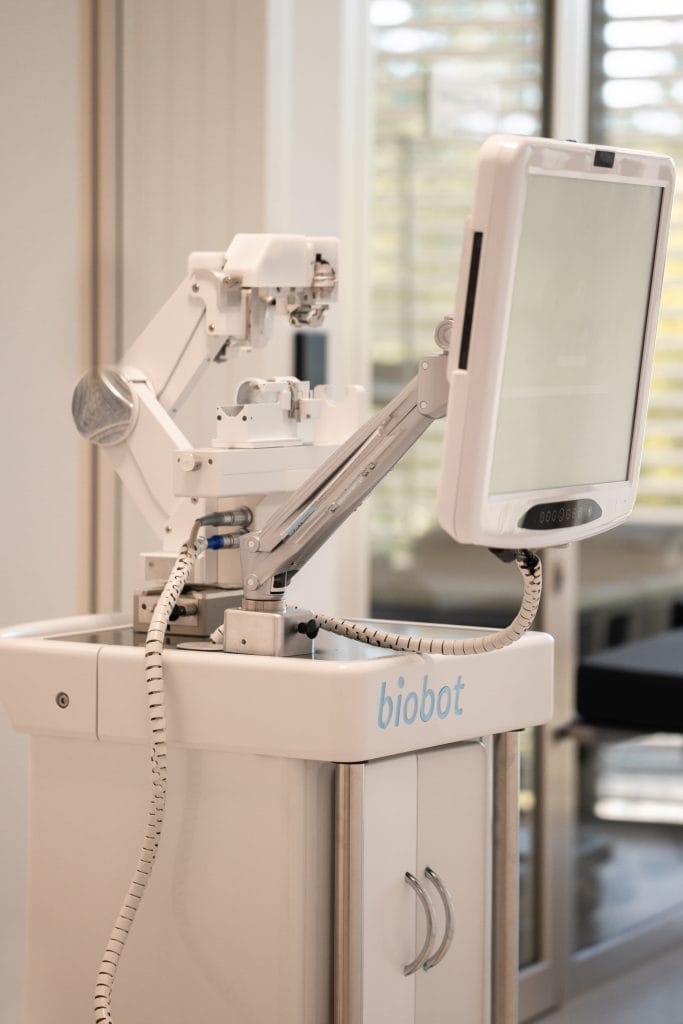Mona Lisa is a robotic system used for prostate biopsy via the transperineal approach, where the biopsy needle passes through the skin of the perineum. The system combines MRI and ultrasound images, explains urologist Ivan Radoja.
Mona Lisa – Prostate Bbiopsy
A prostate biopsy is one of the most critical steps in diagnosing prostate cancer. What used to be an uncomfortable, often painful procedure has been completely transformed by the Mona Lisa Dx Biobot robotic system. This fusion biopsy technique offers exceptional precision—both in sampling tissue and in detecting malignant changes. The procedure is performed under anesthesia, ensuring that the patient feels no pain.
Dr. Radoja: How the system works
“Mona Lisa is a robotic system for prostate biopsy using the transperineal approach, where the biopsy needle passes through the skin of the perineum. The system combines MRI and ultrasound images. A radiologist marks potentially suspicious areas, or lesions, on the MRI scan, which are then ‘fused’ with real-time ultrasound images of the prostate. This enables precise targeting of suspicious lesions,” explains Assoc. Prof. Dr. Ivan Radoja, specialist urologist and subspecialist in neurourology and urodynamics. His work at IMC Priora also focuses on robotic prostate biopsy.

“During the ultrasound examination, a three-dimensional model of the prostate is created. The MRI scan is then uploaded into the system and aligned with the ultrasound image. Through a process called elastic fusion, the system corrects any differences in prostate shape between MRI and ultrasound. Based on this integrated model, biopsy targets are planned, including the direction and depth of each needle pass. Mona Lisa supports various biopsy techniques—targeted, systematic, or saturation biopsy—as well as combinations of these. The system offers extensive flexibility, allowing targets to be added, modified, or removed immediately before the procedure,” says Dr. Radoja.
The robotic guide positions the needle according to the pre-defined plan, ensuring high precision and control of needle depth.
Mona Lisa – better access to all areas of the prostate
The Mona Lisa robot allows multiple samples to be taken through a single entry point, reducing the number of skin punctures and discomfort, while still enabling excellent access to hard-to-reach areas of the prostate.
The samples are sent for analysis to determine whether the changes are malignant, along with their Gleason score and other relevant parameters.

Mona Lisa also generates reports with 3D images and coordinates of each biopsy core, which is crucial for long-term monitoring, especially for patients on active surveillance.
“Key advantages of the Mona Lisa robot include greater precision in detecting clinically significant prostate cancer—those tumors that are aggressive or require treatment—thanks to targeted sampling of MRI-visible lesions. Additionally, the risk of infection is lower compared to transrectal biopsies because the transperineal approach avoids passing through the rectum. The system provides better access to all regions of the prostate, including the anterior zone, apex, and other areas that are difficult to reach with traditional methods. It may also reduce the number of biopsy cores needed, decreasing discomfort, procedural time, and laboratory workload, without compromising diagnostic accuracy,” explains Dr. Radoja.
Furthermore, the system ensures excellent reproducibility: every core’s coordinates are recorded, allowing precise comparison of findings over time.